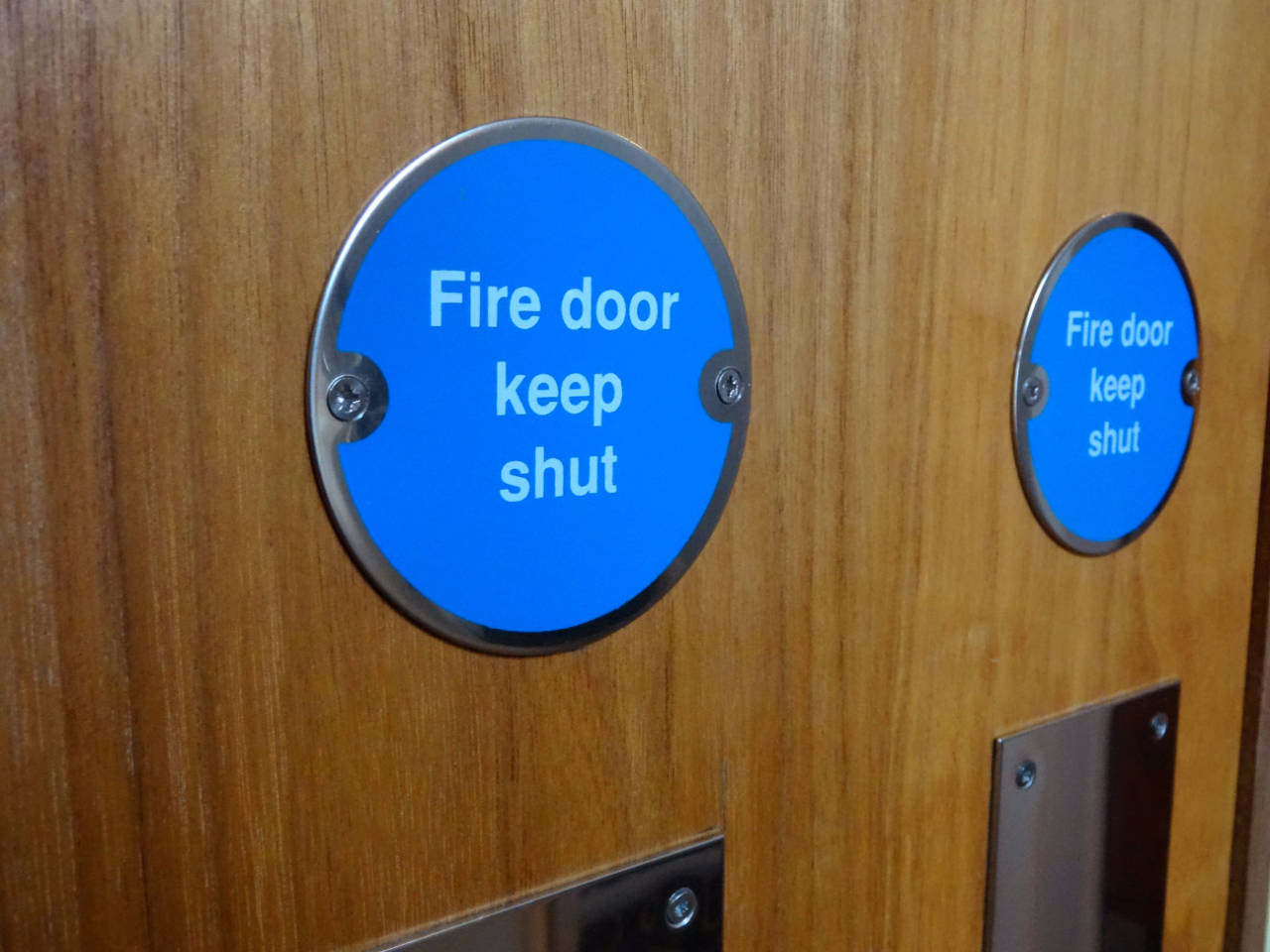
Fire doors are integral to fire safety and play an active role in saving lives. In 2020, the Home Office recorded 240 fire-related fatalities, highlighting the necessity for fire safety precautions in line with fire door regulations. Fire doors are a legal requirement for commercial buildings as they are the first physical line of defence in the event of a fire.
Aside from safeguarding employees, functioning fire doors can help protect organisational assets, such as equipment, plant and premises. Between 2010 and 2020, the average repair costs for businesses following a major fire was £657,074 due to damaged or destroyed assets, materials, plant, premises and equipment. Failure to comply with fire door regulations could lead to prosecution resulting in a hefty fine or even a custodial sentence for organisation or premises owners.
Read our guide to fire door regulations and what they mean for your organisation.
What are the fire door regulations in the UK?
The regulations for fire doors in existing buildings are governed by the Regulatory Reform Fire Safety Order 2005 (RRO) in England and Wales, the Fire Safety (Scotland) Regulations 2006 in Scotland and the Fire and Rescue Services (Northern Ireland) Order 2006 in Northern Ireland.
The RRO 2005 states that an organisation has a duty to take general fire precautions, defined as: “measures to reduce the risk of fire on the premises and the risk of the spread of fire on the premises”. As commercial premises vary widely in structure and use, so do their fire door requirements, making it essential to refer to the RRO for guidance.
In new build commercial premises, fire doors regulations are governed by the British Building Regulations, specifically Approved Document B of the Building Regulations 2010. This document outlines the fire door requirements for the multiple layouts and occupancies applicable to non-dwelling buildings. During construction, it is the responsibility of planners and builders to comply with the building regulations. Regulation 38 states that fire safety information must be passed on to the designated responsible person upon completion of the work. This individual is appointed in accordance with the RRO and assists with the safe evacuation of the building and maintaining the fire safety procedures. Therefore, it is the responsible person, such as a property manager, business owner, premises owner or employer, who is responsible for fire door safety.
What is a fire door, and how is it different to other doors?
Fire doors are internal doors designed to act as a barrier to fire between separate compartments of a building. Their primary purpose is to contain a fire and prevent it from spreading when they are closed.
Fire door versus a standard door
A standard door has the primary role of providing segregation between rooms, such as for privacy and sound insulation. They are most commonly made of lightweight wood and are not designed to protect spaces from fire or prevent the spread of fire or fumes.
Fire doors versus fire exits
A fire exit’s primary function is to enable a quick and easy evacuation of the building during a fire or emergency, therefore fire exit doors are exclusively external. To increase evacuation speed, these doors are usually opened by pushing a bar. They are generally made of timber or UPVC.
How is a fire door designed for its purpose?
A fire door works by sealing off the room where the fire is located in a process called fire compartmentation.
- Construction – fire doors have a solid-core construction to strengthen the structure and are made from various fire-resistant materials such as steel, gypsum, timber or aluminium. Some have windows that are made from fire-resistant borosilicate or ceramic glass.
- Fitting – Fire doors are designed to be flush with their frame, with any gaps between door and frame measuring less than 4mm.
- Labelling – To ensure they remain shut, most fire doors are fitted with an overhead door closer. Fire doors should also be labelled as such with clear instructions that they should remain closed at all times.
- Seals – Fire doors are fitted with intumescent strips at their base and along their frames. These swell when exposed to heat, creating a firm seal around the door to contain the fire and prevent smoke from seeping out.
What are the fire door standards in the UK?
Fire doors are rated according to how long they withstand the effects of fire, with the most popular fire doors carrying an FD30 or FD60 rating. The numbers represent how many minutes a door can maintain its integrity and stability in the event of a fire. The ratings are assigned in accordance with the British Standard 476 Fire tests.
What are the maintenance regulations for fire doors?
As an integral part of a building’s passive fire protection system, fire doors must be carefully maintained. A 2019 survey by the Fire Door Inspection Scheme reported that of 100,000 fire doors inspected, 76% were not fit for purpose. Fire doors should be checked a minimum of every six months by your organisation’s responsible person and they should also be evaluated during your annual fire risk assessment. There are five key areas to examine when checking your fire doors.
1. Certification
A fire door should carry a third-party certification that marks it out as a fire door and means it can be traced back to the original manufacturer. This should be in the form of a sticker either on the top or on the side of the door. Common certifications are awarded by bodies such as Certifire and the British Woodworking Federation.
2. Gaps
There should be no more than 4mm of space between the door and the frame at any point when the door is shut. The gap under the door should not exceed 8mm.
3. Seals
Fire doors are fitted with intumescent strips around their perimeter which form a secure seal when heat makes them expand. Any rips or wear to the strips could compromise the effectiveness of the seal, so these need to be kept in optimum condition.
4. Hinges
Hinges should be flush with their surface and not have any broken or missing screws. Some hinges may also carry a certification showing they are fire-resistant.
5. Closing properly
Ensure the door shuts smoothly and doesn’t catch on the frame or floor. Except when in use, the door should also remain closed at all times and should never be obstructed.

Rob Sherman
Director of Fire Safety
